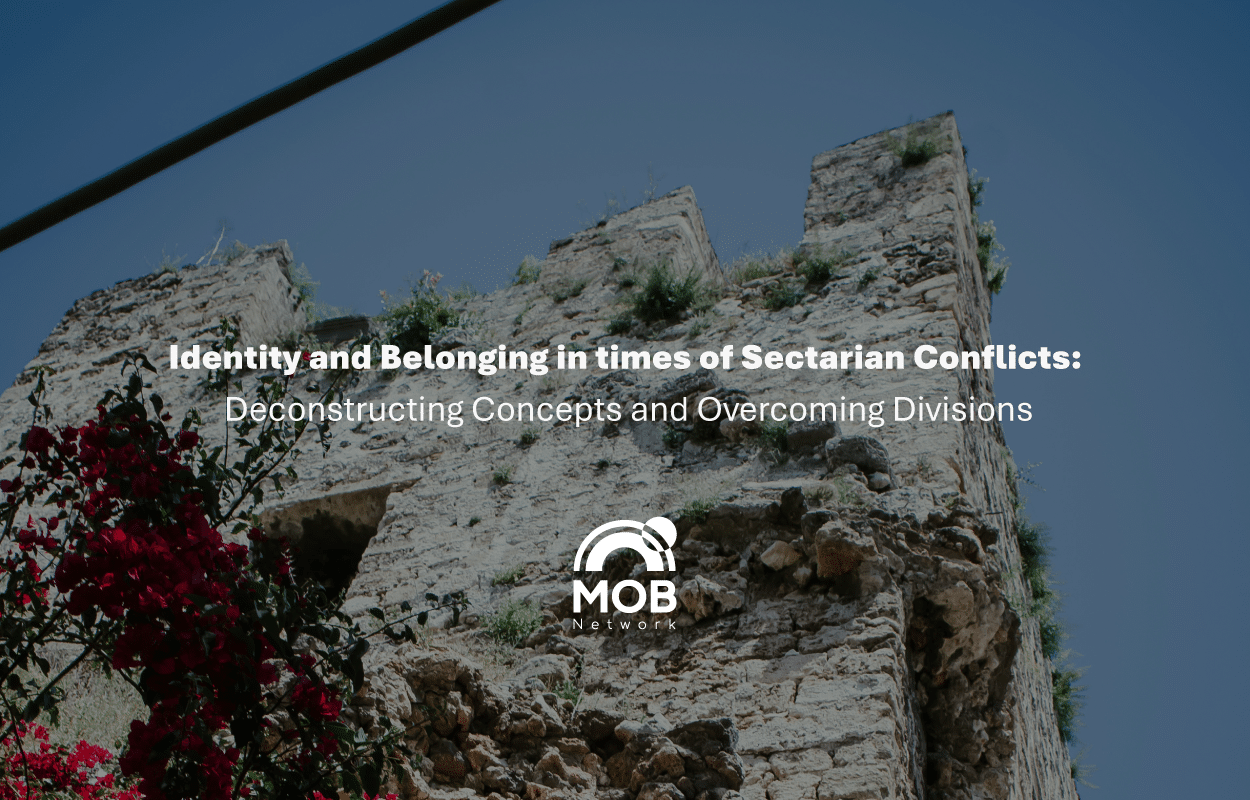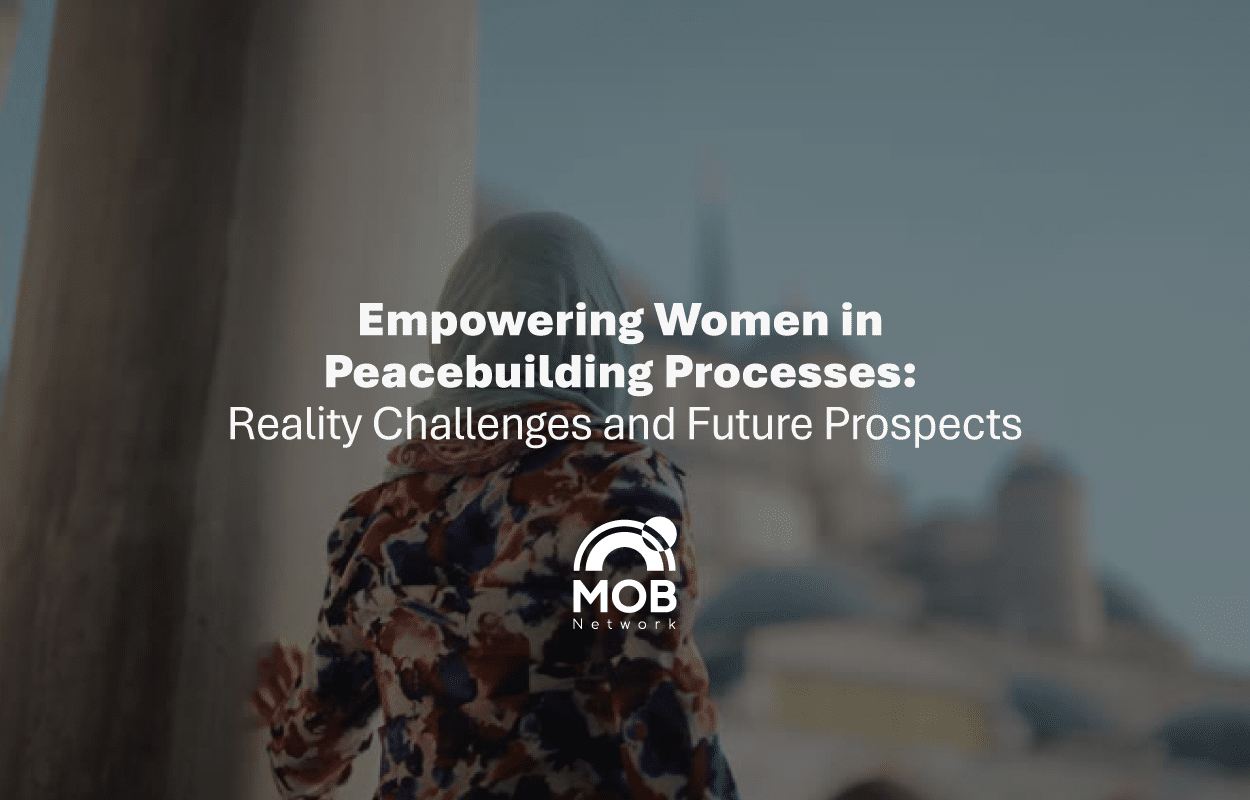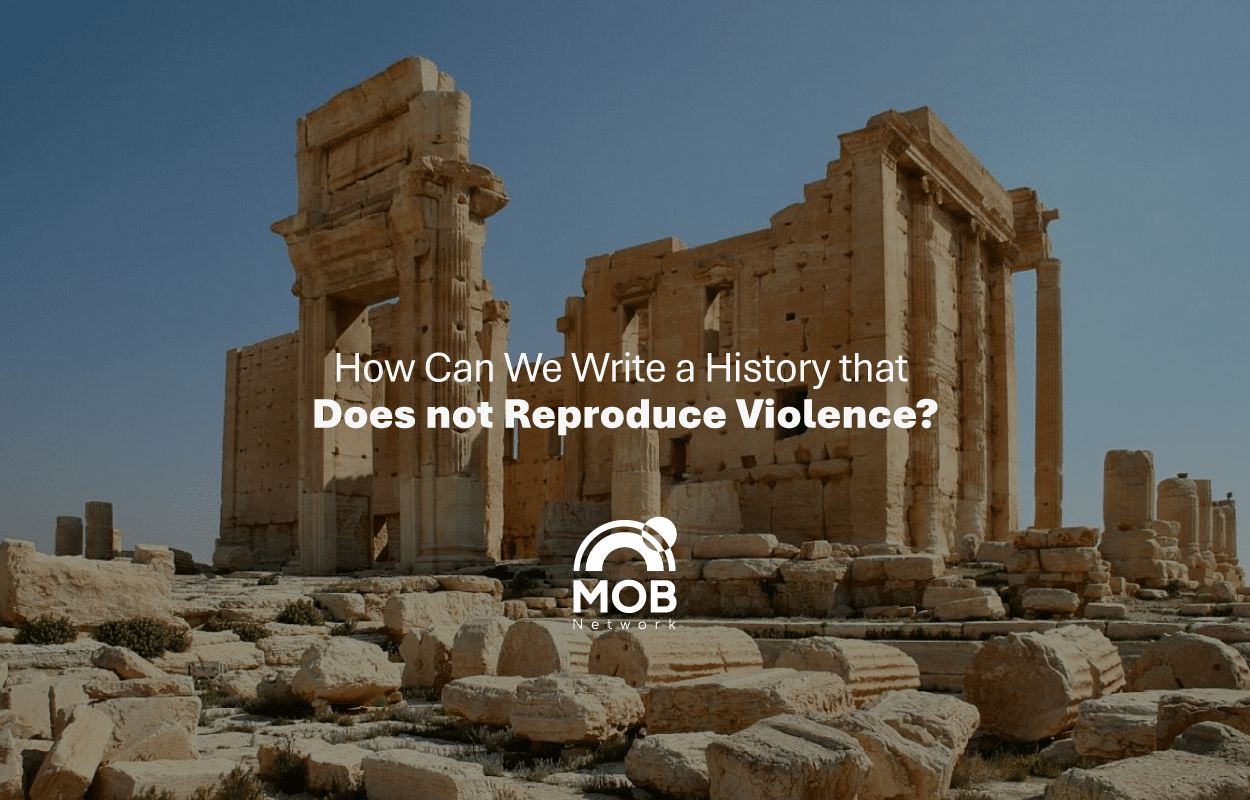Mediation: The Art of Knowing the Wishes of Conflict Parties
“I sometimes lie when I talk to the conflict parties,” one insider mediator said, “I tell them the other side wants to talk with them, even if they have told me they do not want to talk.” But then he corrected himself: “Well, in a sense I am not lying, I am telling a deeper truth: they do want to talk, but for tactical and face-saving reasons they have to say they do not want to talk – even to me in private. Of course, if my guess about their real intentions is wrong, then I am lost. But in this case, I was right: they finally did sit together to talk.”
This quote signifies the complexity and sensitivity of the work of insider mediators, and sheds a light on their important role in understanding the true wants of conflicting parties beyond personal interests, and ethnic, cultural, and religious affiliations, and political gains; so that insider mediators become key players in the peace of their communities.
Mediation in Conflict as Old as Time
Mediation for thousands of years has been defined as the process of resolving conflict through monitoring and conflict mitigation done by a neutral party from outside the circle of existing conflicting parties. This process leads to improving relationships and party communication based on their willingness to reach a common ground that may lead to an official agreement concerning the conflict.
Historians believe that mediation is ancient in all its forms, and refer to the oldest case of mediation in Sumerian civilization in the middle east circa 4500 B.C.
The Confucius philosophy in China, circa 550 B.C. relied on the efforts of mediation, and affirmed the necessity of conflicting parties resorting to administrative conciliation, which holds the record for the first case of quill mediation, where the mediator meets in private with each party, and works on conveying demands and messages and improving relations; which led to the use of mediation as a main tool for resolving conflict in China for thousands of years, continuing to this day.
Sacred texts tell stories of mediators who interfered with the approval of conflicting parties to resolve or amend them, such as the tale of the mediation of the prophet Suliman in Torah between two ladies contesting over the lineage of a baby, and the story of the acceptance of the mediation of prophet Mohamad among the people of Macca regarding the restoration of Ka’aba before becoming a prophet.
Mediation in the levant is relied on as means to reconciliation, especially in murder cases, called “Akd Al-Rayeh”, or Bunting (knotting) the Banner amongst Druze monotheists, where the Tribes’ chiefs do mediation rounds between the families of the deceased and those of the murderer to reach conciliation with either paying a ransom or pardon. This has been in use for hundreds of years.
This method of reconciliation is, also, adopted by many Syrian tribes in different regions as documented by the directorate of monuments and museums as part of the intangible Syrian cultural heritage in 2014.
Mediation in Modern Times
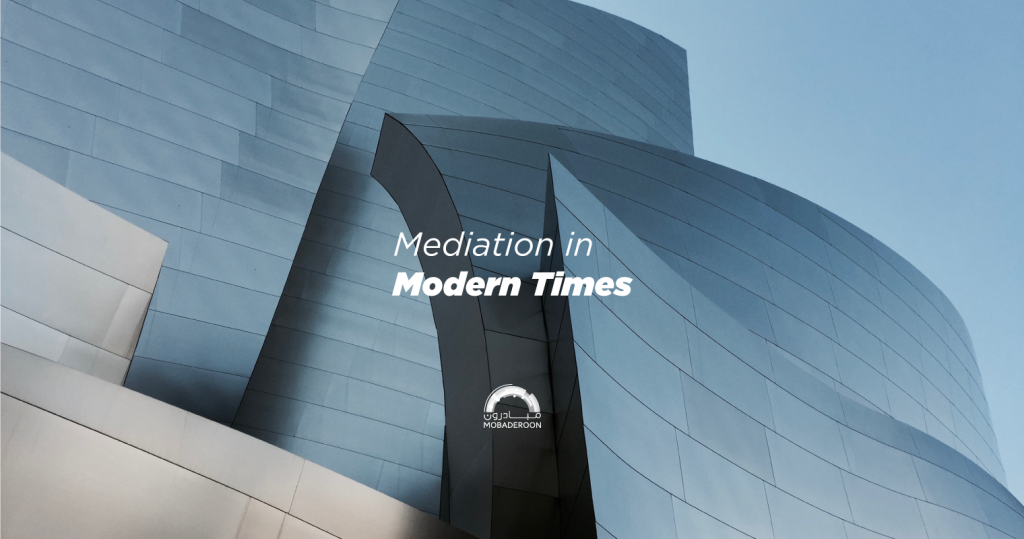
Mediation is defined as an efficient steppingstone to resolving the many varieties of conflict, whether commercial, to speed reaching economic results for sake of the parties, or social (legal – familial) that lessens, for family members, the burden of going to courts and accompanying procedures; or mediation in global armed conflicts that reduces the humanitarian woes of battles and wars, where mediation is one of the most efficient ways to stop the onslaught or start of burgeoning conflicts, to manage and resolve them in both the local and international contexts according to UN (United Nations) convention.
The Geneva Conventions of 1949, a part of International Humanitarian Law which governs armed conflicts, gives international neutral organizations such as ICRC (International Committee of the Red Cross), and many others, the right to provide services to conflict parties to mitigate the repercussions of clashes. International Human Law protects those who do not get involved in, or stop participating in hostile actions.
According to United Nations Guidance for Effective Mediation, mediation is defined as “a process whereby a third party assists two or more parties, with their consent, to prevent, manage or resolve a conflict by helping them to develop mutually acceptable agreements. The premise of mediation is that in the right environment, conflict parties can improve their relationships and move towards cooperation. Mediation outcomes can be limited in scope, dealing with a specific issue in order to contain or manage a conflict, or can tackle a broad range of issues in a comprehensive peace agreement.”.
International mediation is based on a logic and an important assumption: if a sound environment is found for conflicting parties. Then, it is possible to progress communication among themselves to reach a mode of cooperation to resolve, manage, or conciliate a conflict on the level of a limited one case, or a broader concept of complete peace agreement.
All of this is voluntarily, and comes with a decisive agreement from conflicting parties where they write down their agreement on the process and procedures of mediation including the agenda, role, and extension of authority of the mediator, all of which is done within a space of global support, mostly national support, for this operation.
Ever heard of insider mediators in domestic or armed conflicts who work without support or authority?
In civil and armed conflicts, the situation may escalate to a point where international mediators cannot yet intervene, or local people take the initiative and become mediators working to reduce the intensity of the conflict.
They may not have a safe home to return to, or local or international parties with enough concern should these insider mediators be subject to conflict intervention dangers.
“Insider mediators are seen as having in-depth knowledge of the situation and having close relations with relevant parties.”
The United Nations recognizes the importance and role of insider mediators and their endeavors and roles that are different from outsider official mediation ones such as envoys, rights activists, hosts, facilitators, conflict diagnosers, trust builders, healers, trainers, organizers, and coordinators; and stress their importance in accessing outsider official mediation, preparation and readiness. They stress that no peace-building process can take place without coordinating efforts between domestic insider mediators and international outsider mediators.
Our preconceptions about formal mediation processes lead us to ask how can a person be an insider mediator?
Herein lies the challenge in the work of the insider mediator, as s/he is affected and sometimes s/he is a party in the conflict and does not enjoy complete impartiality. Rather, s/he is a person who chose taking the initiative and moving to utilize her/his extensive knowledge of the conflict and her/his reliable relationships with its parties, so that the mediation is based on the verbal consent of the parties that may later transform into written agreements.
Cases of internationally renowned insider mediation cases, some have been adopted to be a supporting curriculum for insider mediators
Stella Sabiiti, a woman who was kidnapped during a violent conflict, and who later became a mediator between the parties to the same conflict in Uganda.
Deka Ibrahim Abdi, who started her mediation in the disputes of vegetable traders in the market in Wajir, Kenya.
Franklin Quijano in the Philippines is a government employee who invested his relationships and trust in society to gain the trust of opponents.
Padama Ratna Toladar, a Maui human rights activist, who later became a mediator between parties that use and embrace violence in response to cases/issues.
Riya Kadyrova, a feminist activist who was able to be accepted as a woman who mediates between men and plays multiple roles in matters of influence and power.
Role of Insider Mediators in Peace Processes
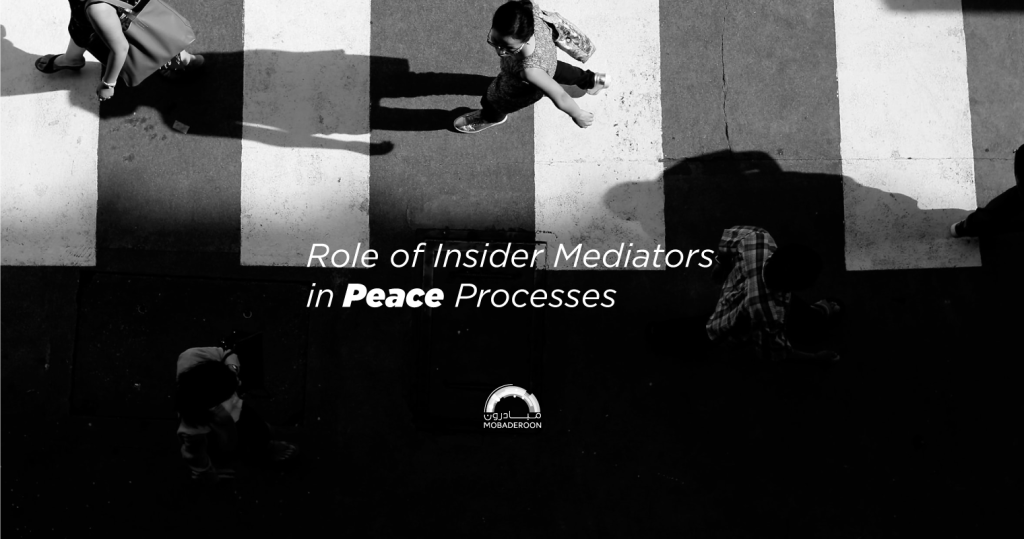
In a study conducted by Berghof Foundation, the Mediation Support Project (MSP) was founded in 2005 as a joint venture between the Swiss Peace Foundation (swisspeace) and the Center for Security Studies (CSS) at the ETH Zurich, and in an attempt to understand the behavior and gained experiences of dedicated individuals from conflict zones, who have contributed huge efforts in informal mediation operations that led to positive changes.
This study summarizes the characteristics of insider mediators into 4 categories:
1st: “insider mediators are characterized by commitment, in-depth knowledge and relationships”
They show a great deal of perseverance, they do not care about media fame or financial interests, and they are motivated by the desire of their people to achieve peace despite the risks they may face, or they may be accused of their reputation or integrity or the most serious accusation that can be brought against any mediator of bias.
They are insider mediators in fact that their bias is in the relationships and not in the outcome or the process, they are a resource that the insider mediators use in developing the process and reaching the results.
“Mediators tell conflict parties to “separate the person from the behaviour”. Mediators can tell themselves the same truth: one can be a biased person, but behave in an even-handed manner.”.
2nd: insider mediators draw on multiple resources, deeply embedded in their cultural context
- Motivation through increasing the support of the local population to them, even if the support and delegation are informal.
- They use teamwork and know that no single mediator can handle the complexities of a conflict alone.
- They invest in understanding religions and cultural practices to achieve better communication with conflict parties.
- They build on their reputation and accumulated experiences in mediation operations, so that the accumulated reputation becomes a skill in new mediation operations.
- They maximize material resources just like their investment in non-material resources, and participate in securing them, even if this sometimes leads to being personal and volunteer contributors to hosting and facilitating mediation processes.
3rd: the roles of insider and outsider mediators are complementary to make the conflict transformation and management process successful
As the efforts of insider mediators are keen on local empowerment and national ownership of conflict transformation, which is one of the most important conditions to achieve its sustainability, they also benefit from the learning and organization of outsider mediators and international support, and insider mediators play roles based on their deep understanding of the region, conflict and context that outsiders may not be able to play as if They communicate messages between the parties that cut off the state of the lack of communication, or they improve communication between them, as they have an advantage that cannot be ignored that they live the conflict with its parties.
4th: the importance of internal mediators lies in the sustainability of conflict transformation:
It is not enough to act on conflicts as they occur. Rather, action must be taken to change the social, cultural and economic structure that supports the outbreak and/or continuation of conflict through substantive assessment and sharing of the relationships, interests and discourses that reinforce violent conflict, which is called conflict transformation.
Insider mediators have an important role in maintaining social peace and forming an early warning system to maintain conflict transformation and conflict management processes and make them more acceptable locally, because they have legitimacy and experience in dealing with societal cracks, supporting their countries in historical moments to transform into more just and peaceful societies.
It can be said that the most important thing that insider mediators enjoy is their vision of what they would like their country to be in the future and how they act, think and overcome the obstacles of conflict to reach with everyone what is better.
Knowing what the parties to the conflict want does not require mediators with different roles to be loved only, but also to know how everyone can achieve what they really want despite the noise and pain of conflicts.
Author: Mohammad Khier Al Tinawi
lawyer and social activist
Read also: How the mediator designs the process to go from “No” to “Yes”



